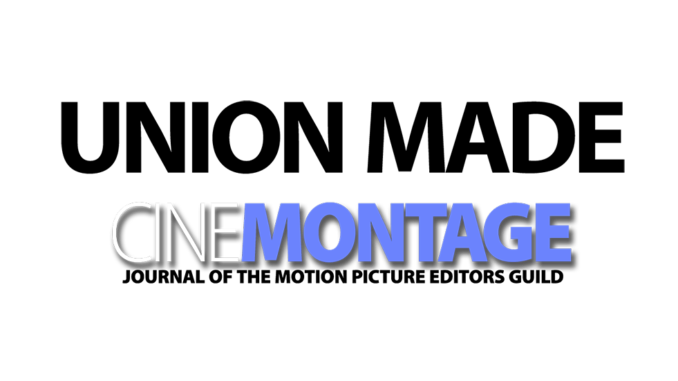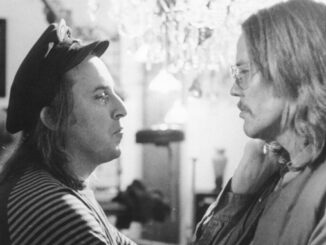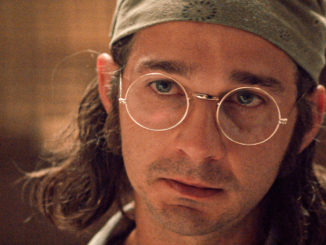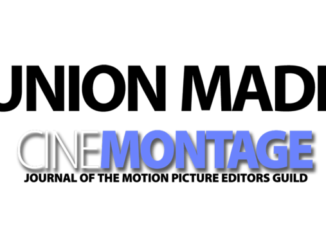
by Tina Hirsch, ACE
Growing up in Connecticut, I had no idea how movies were made. I thought that they just “happened.” Although I remember watching television with my mother who would occasionally say, as the credits flicked by, “Oh, I knew him when he was a press agent.” I remember thinking how great it would be if one day, when I grew up, I would be lucky enough to know someone whose name was in the credits.
I never went to film school. I studied Art History at Boston University. I did, however, religiously attend the weekend screenings at the Student Union. After college, I moved to New York to work for a fashion photographer. While there, I fell in with a group of people making a movie called Greetings (starring Robert DeNiro in his film debut) and that was it. I was hooked.
I started by working for nothing in order to learn. They call it “internship” now, but at that time I had to argue with the owner of a trailer company who kept telling me that he’d just laid off five people, and I kept telling him that he didn’t have to pay me. Finally he agreed to let me “work” there. I learned how to thread up a Moviola (they had arms in New York!) and how to do a tape splice.
A couple of days later, Bud Smith (a real Hollywood editor!) moved in down the hall to cut a Robert Downey, Sr. film, Putney Swope. I ran down to his room and asked his assistant if she would teach me what she was doing. So I learned how to sync dailies, make leaders and log in film.
A few months later, I got a real job on a film for $100 a week. Actually it was two jobs. During the day, I was script supervisor and, after dinner, I got to sync dailies and make leaders. I think I got by on four hours sleep a night. Thank goodness it was a short schedule, so I was available when they called me for Woodstock, which was life-altering.
I started by working for nothing in order to learn… I had to argue with the owner of a trailer company who kept telling me that he’d just laid off five people, and I kept telling him that he didn’t have to pay me. Finally he agreed to let me “work” there.
Thelma Schoonmaker interviewed me for the job. She asked me whether I would prefer working on the musical performances or the documentary section. I’m sure most people would have opted for the music––after all, the greatest rock musicians of the time were playing at the Woodstock festival. But I was more interested in the people who went to the three-day event.
All the documentary footage had to be synched by eye. Éclair cameras beeped when they were turned on, so that was a clue, but it wasn’t foolproof. Several of the 16mm cameras didn’t have that feature. I don’t remember how many assistants were hired to do the synching, but they worked in three shifts around the clock. My job was to set up a system of coding and logging, check sync on all material and figure out how to sync sections that others hadn’t been able to. That synching experience still comes in handy today in oh so many ways.
We finished Woodstock in LA. The 15 or so people who had been picked to finish the film left the frigid Northeast and arrived here on December 7. It was warm. We got into shorts to go out for lunch. We ate outside. I was in love. My job was over that spring, but I wanted desperately to come back.
A year later, I had my chance. I took a little vacation in LA. I arrived knowing two or three people, but they obviously were the right people. Within a week, I got a two-day cutting job that turned into a month. Through the director of that film, I met an actress, through her a writer, and through him a director who hired me to do a low-budget film that became a surprise hit. My career was launched.
I did several non-union films for Roger Corman but wanted to do films with more “experienced” people. The union roster was exclusive in those days. But, again, I was lucky. A company that hired me to do some work signed a union contract. Bingo! I was in the union.
And I did get to work on bigger films with more seasoned professionals. I’ve been very lucky to have a career in both movies (Macon County Line, The Driver, Gremlins, Dante’s Peak) and television (The West Wing, Back When We Were Grownups). I’ve also worked with some of the most talented people in the film business. And I’ve been lucky enough to give back––through my volunteer work with American Cinema Editors and teaching at USC.
I never planned any of this. I let life lead me down a glorious path I never could have imagined in my wildest dreams.





